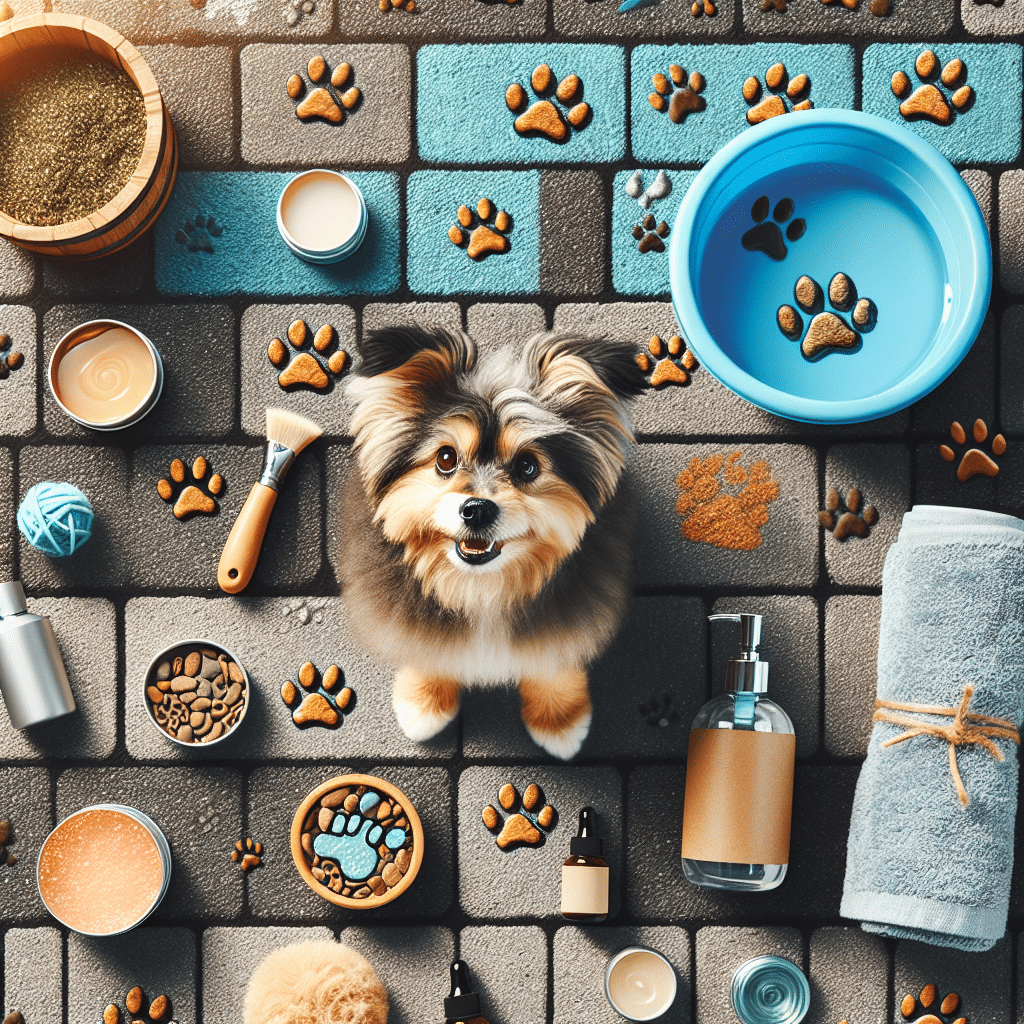Understanding the Importance of Paw Care for Urban Dogs
Urban environments present unique challenges for dogs, particularly when it comes to their paws. The concrete jungle can become a breeding ground for rough surfaces, hot pavement, and hazardous debris that can harm your dog’s delicate paw pads. Ensuring proper paw care is essential for their health and well-being.
Recognizing the Anatomy of Dog Paws
Dog paws consist of several key components:
- Paw Pads: Thick, cushioned layers that provide traction and absorb shock.
- Nails: Protect the toe ends and provide grip.
- Digital Pads: Located under each toe, contributing to balance and stability.
- Hair Between Paw Pads: Helps to protect against cold and debris.
Understanding these elements allows dog owners to appreciate why paw care should be prioritized.
The Impact of Urban Environments on Paw Health
Urban dogs face specific risks that can affect their paw health:
- Heat: Pavement can reach extreme temperatures, leading to burns.
- Sharp Objects: Glass shards, metal scraps, and other debris can cause cuts or punctures.
- Chemical Exposure: De-icing salts, pesticides, and cleaning products can irritate or burn paw pads.
- Infection Risks: Wet, dirty conditions can lead to fungal infections or irritations.
Regular Inspection of Paws
Routine inspections are crucial for detecting potential issues early. Assess your dog’s paws regularly for:
- Cracks or Cuts: Look for any signs of injury or abrasions.
- Swelling or Heat: This may indicate an infection or foreign object lodged in the paw.
- Abnormal Nail Growth: Check for nails that appear overly long or ingrown.
The Benefits of Paw Maintenance
Investing time in dog paw maintenance leads to numerous benefits:
- Comfort: Healthy paws ensure your dog can walk, run, and play without pain.
- Prevention of Injury: Regular care helps identify problems before they escalate.
- Overall Health: Healthy paws contribute to a happy, active lifestyle.
Natural Remedies for Paw Care
Utilizing natural products can be beneficial for maintaining healthy paws. Here are several effective options:
1. Coconut Oil
Coconut oil has antifungal and antibacterial properties, making it an excellent option for paw pad care. Apply a thin layer to keep paws moisturized and defend against irritants.
2. Beeswax Paw Balm
A homemade beeswax balm can create a protective barrier against heat and cold. Combine beeswax with shea butter and coconut oil for a nourishing mixture that stays on longer.
3. Oatmeal Soaks
Oatmeal is a natural anti-inflammatory and can soothe irritated paw pads. Prepare a soothing soak by blending oatmeal and warm water, allowing your dog to soak their paws.
4. Apple Cider Vinegar
Diluted apple cider vinegar can help with disinfecting cuts or fungal infections. Mix one part vinegar with two parts water and apply with a clean cloth.
Keeping Paws Clean
Urban dogs are exposed to dirt and debris that can accumulate between their paw pads. To keep their paws clean:
- Daily Wipes: Use pet-safe wet wipes or a damp cloth to wipe your dog’s paws after walks.
- Regular Baths: Bathe your dog regularly, taking extra care to clean the paws thoroughly.
Nail Care
Maintaining proper nail length is crucial. Here’s how you can manage your dog’s nails:
- Regular Trimming: Trim your dog’s nails at least every 3-4 weeks using sharp dog nail clippers. This prevents discomfort and overgrowth.
- Grinding: An alternative method involves using a nail grinder, which can be less stressful for some dogs.
Paw Protection Gear
There are several products available that offer additional protection:
- Dog Boots: These can protect paw pads during walks on hot pavement or in icy conditions. Make sure to acclimate your dog to wearing them before attempting a walk.
- Paw Wax: This provides protection from rough surfaces and harsh weather conditions. Apply before heading out to mitigate risks.
Seasonal Considerations
Urban living presents different risks depending on the season:
- Summer: The heat of sidewalks can be brutal. Avoid walks during peak sun hours (10 AM – 4 PM) to prevent burns.
- Winter: Ice and salt can irritate paws. Consider wiping your dog’s paws after walks in winter months.
Addressing Paw Pad Allergies
Some dogs may develop allergies due to exposure to urban pollutants or certain materials. Signs of allergies include:
- Excessive licking: If your dog is licking their paws excessively, it may indicate itchiness or irritation.
- Redness or Swelling: Monitor for any signs of inflammation.
In such cases, consult with a veterinarian for appropriate allergy testing and treatment.
Providing a Healthy Environment at Home
Creating a safe and clean environment is essential for protecting your dog’s paws. Implement the following steps:
- Use Natural Cleaners: Avoid cleaning products containing harsh chemicals that can irritate paws.
- Grooming Routine: Regular brushing reduces the amount of fur and dirt that can accumulate around the paws.
Hydration and Nutrition
Ensure your dog is well-hydrated and nourished, as overall health significantly impacts paw health. Feed high-quality dog food rich in omega fatty acids to support skin and paw health.
Conclusion: Making Paw Care a Priority
Prioritizing paw care for urban dogs involves understanding their unique needs and risks. By conducting regular inspections, utilizing natural remedies, and ensuring proper maintenance, you can keep your pet happy and healthy.
Making these practices a routine can lead to a longer, healthier life for your urban companion.
